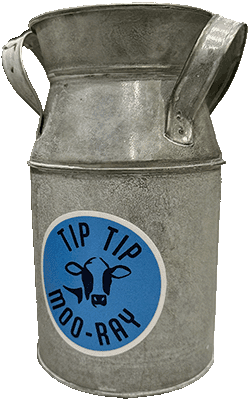Photo by ArtHouse Studio via Pexels
Excerpt from Harvard Magazine:
In new research described in Nature Ecology & Evolution, Warinner and her coauthors use dental calculus to show that around 3000 b.c., ruminant dairying rapidly spread thousands of kilometers across the Eurasian Steppe, from the north Caucusus region near the Black Sea to as far east as Mongolia, in the span of only a few centuries. There, the grasslands, although inhospitable to grain agriculture, provided abundant nutrition for grazing animals and supported the production of a wide variety of dairy-based foods for humans.
But not until 1200 B.C., coincident with the first plaque-protein evidence for horse-milk consumption, does mobile pastoralism “reach its height,” says Warinner. Mare’s milk was probably used “almost exclusively for alcohol production,” to make a drink that is still used today to cement contracts and social ties, but the use of horses led to a transformative expansion of dairying culture. Horses travel farther and faster than other ruminants, she points out, thereby enhancing herding capacity, access to pasturage, and the control of larger territories. And in winter, they dig instinctually for snow-covered grasses, exposing it for sheep, goats, and cattle, which would otherwise starve. “Horses,” explains Warinner, “made the whole dairy-based economy work better and more efficiently.” The stage was set for the rise of nomadic empires.
But at least one mystery remains. Although 95 percent of the Eastern Steppe population lacks the gene variant for digesting lactose, ethnographic studies of modern nomadic herders show that between 30 percent and 50 percent of their summertime dietary calories come from dairy products. These range from mare’s milk (men will consume up to eight liters of fermented airag a day), to lightweight, calorie-dense curds that can be transported and stored for up to two years—in all, more than 20 different dairy-based foods. How these nomads cope with such extreme levels of lactose in their diet is unknown, but Warinner suspects they may have highly altered gut microbiomes that could be adaptive. This summer, she is beginning to test that hypothesis, working remotely from Cambridge with her field collection team in COVID-free Mongolia. She just might find that the Mongol empire was built on milk and microbes.
It’s not at all uncommon for people who have been diagnosed as lactose intolerant to see benefit in consuming fermented and raw dairy products in the US. We can only hope the arbiters of Science™ will catch up with this reality someday.
Read the full article by Jonathan Shaw
Note from Dr K: Horses are not ruminants. Instead of fermenting plant matter in the foregut, the rumen as cattle, deer, goats, sheep, and camels do, horses are hindgut fermenters. Like swine and elephants.




